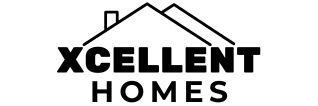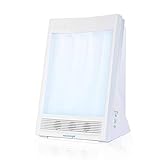Maintaining adequate Vitamin D levels is crucial for bone health, immune function, and overall well-being, especially in regions with limited sunlight; consequently, selecting the best sun lamps for Vitamin D provides a convenient, indoor source of essential UVB.
These specialized lamps emit ultraviolet B (UVB) radiation, stimulating the skin to produce Vitamin D, a vital nutrient often deficient during winter months.
5 Best Sun Lamps for Vitamin D
1) Verilux HappyLight Touch Plus — Best balance of size, price and features
Why it stands out: Verilux is one of the most recognizable names in consumer light therapy, and the HappyLight Touch Plus packs 10,000 lux (UV-free LEDs) into a compact, modern unit with adjustable brightness, color settings and a countdown timer. It’s portable enough for a breakfast table, desk, or bedside and is built specifically for daily light-therapy use.
Good for: people who want a compact, reliable lamp from a trusted brand; those who want multiple color/brightness modes for both therapy and general task lighting.
Pros: trusted brand, good build and controls, detachable stand on some models, well-rated on Amazon.
Cons: smaller surface area than floor lamps—positioning matters for effective lux at your face.
2) Carex Day-Light Classic Plus — Best clinical-style therapy lamp
Why it stands out: Carex’s Day-Light Classic Plus is frequently recommended by clinicians and reviewers for delivering a consistent 10,000 lux at the recommended distance (~12–14 inches). It’s larger than the compact desk lamps, with an adjustable height/angle and a wide diffusion panel that reduces glare while still delivering therapeutic light. If you want a ‘serious’ light-box experience you can leave beside your table or dresser, this is a top choice.
Good for: users who plan to make light therapy a daily routine and want a larger emitter (less sensitive to exact placement).
Pros: robust construction, large emitting surface, clinically styled.
Cons: takes up more desk/side-table space and tends to cost more than compact models.
3) TheraLite Aura (and TheraLite Aura Qi) — Best feature-rich option (alarm, USB, charger)
Why it stands out: TheraLite’s Aura line includes compact but powerful lamps that reach 10,000 lux and add useful extras—some models (Aura Qi) include alarm/wake-up features, USB charging, and phone charging pads. They balance good therapeutic performance with modern conveniences, making them great for bedside use where a wake-up routine is helpful. TheraLite is a widely sold brand on Amazon with multiple Aura variants.
Good for: people who want an all-in-one bedside lamp (therapy + alarm + charging).
Pros: multifunctional, adjustable angles/brightness, widely available.
Cons: extra features mean a slightly higher price and more electronics to manage.
4. Northern Light Technologies Boxelite
Best Professional-Grade SAD Therapy Lamp
Northern Light Technologies (NLT) is one of the most respected names in the light therapy industry. Their Boxelite model is often recommended by clinicians and mental-health professionals for SAD treatment.
This lamp produces 10,000 lux at up to 14 inches, offering a wide illumination field that allows flexibility in movement. Its neutral white light closely mimics natural daylight without UV radiation.
Why it’s great:
- Professional-grade performance
- Extremely even light distribution
- Long-lasting fluorescent bulbs
- Clinically respected manufacturer
Best for:
Users who want a no-nonsense, medical-style therapy lamp with proven effectiveness.
) Miroco Light Therapy Lamp — Best value + strong Amazon presence
Why it stands out: Miroco’s light therapy lamps (several compact models on Amazon) consistently advertise 10,000 lux, multiple brightness levels, timers, and memory functions. Miroco is popular for offering solid performance at a friendly price and has an official Amazon store with customer video demos and many buyer reviews—making it easy to compare variants and choose the right size for your desk or bedside.
Good for: budget-minded shoppers who still want trusted features (timers, adjustable brightness) from a brand with many positive Amazon reviews.
Pros: affordable, good feature set, compact.
Cons: smaller surface area than full-sized panels; verify lux specs at the distance you’ll use it.
5. NatureBright SunTouch Plus
Best Portable & Travel-Friendly Sun Lamp
The NatureBright SunTouch Plus has been around for many years and remains a popular choice due to its portability and versatility. It delivers bright therapeutic light while remaining compact enough for travel or small spaces.
Some versions include optional negative ion technology, though the light therapy itself is the primary benefit. Its folding design makes it easy to store or carry.
Why it’s great:
- Easy to set up and use
- Compact and lightweight
- Long-standing product line
- Ideal for travel or small rooms
Buying Guide
Selecting the ideal sun lamps for Vitamin D genuinely requires thoughtful consideration of several crucial factors, consequently ensuring your chosen lamp provides optimal UVB output, reliable safety, and ease of use for effective Vitamin D synthesis.
UVB Output (Wavelength & Intensity)
The most critical factor is the UVB output.
Look for lamps that specifically state they produce UVB radiation in the 290-320 nanometer (nm) range, which is the spectrum essential for Vitamin D synthesis.
Aim for lamps designed to deliver sufficient UVB intensity (often measured in µW/cm² at a specific distance).
Avoid lamps that are purely UVA (tanning bed bronzers) or UVC (germicidal), as these are not for Vitamin D.
Proper UVB output ensures effective synthesis, subsequently supporting optimal Vitamin D levels.
Safety Features (Timer, Goggles, UV-Filtered)
Safety is paramount with UV exposure.
Look for lamps with a built-in timer to control exposure duration precisely, preventing overexposure and sunburn.
UV-blocking safety eyewear (goggles) should always be included and worn during use to protect eyes from harmful UV radiation.
Ensure the lamp is specifically designed for human use (not reptile or tanning beds unless used correctly) and meets safety standards.
These features actively minimize risks, subsequently guaranteeing safe and controlled Vitamin D supplementation.
Design and Portability
Sun lamps for Vitamin D come in various designs and form factors.
Options include compact tabletop units, larger panels, or handheld wands.
Consider portability if you plan to use the lamp in different locations at home or while traveling.
Choose a design that fits your space and lifestyle, subsequently ensuring convenient and consistent daily use.
Ease of Use
The lamp should be easy to operate for consistent daily use.
Look for simple controls, clear instructions, and straightforward setup.
A user-friendly interface encourages regular therapy, subsequently streamlining your daily routine.
Differentiation from Tanning Lamps
Understand that Vitamin D lamps are distinct from tanning lamps.
While tanning lamps do produce some UVB, their primary focus is often UVA for bronzing, sometimes at higher, potentially riskier levels of UVB.
Dedicated Vitamin D lamps prioritize the correct UVB spectrum for synthesis, with controlled output.
Ensure the lamp is marketed specifically for Vitamin D production, subsequently providing targeted health benefits.
Lifespan and Bulb Replacement
The lifespan of the lamp indicates how long it will effectively produce UVB.
UVB output degrades over time, even if the lamp still lights up.
Check the manufacturer’s recommended replacement schedule (e.g., after a certain number of hours or months) to ensure consistent UVB levels.
Regular replacement guarantees therapeutic efficacy, subsequently maintaining reliable Vitamin D synthesis.
Medical Guidance
It is strongly recommended to consult with a healthcare professional before starting Vitamin D lamp therapy.
They can assess your Vitamin D levels, recommend appropriate exposure times, and advise on any contraindications.
Proper medical guidance ensures safe and effective use, subsequently optimizing health outcomes.
Tips
Consult Your Doctor
- Always consult your doctor before using a Vitamin D lamp, consequently discussing your specific needs and safe exposure guidelines.
- They can monitor your Vitamin D levels and recommend appropriate usage.
Always Wear Eye Protection
- Always wear the provided UV-blocking safety goggles during every session, consequently protecting your eyes from harmful UV radiation.
- Never look directly at the lamp while it is on.
Follow Exposure Schedule
- Adhere strictly to the manufacturer’s recommended exposure times and distances, consequently preventing overexposure and sunburn.
- Start with shorter sessions and gradually increase as advised by your doctor or manual.
Consistency is Key
- Use your Vitamin D lamp consistently, ideally a few times a week, following a regular schedule, consequently maximizing Vitamin D synthesis.
- Consistency is vital for maintaining adequate levels.
Monitor Skin Response
- Pay attention to your skin’s response; if you experience any redness, burning, or discomfort, immediately stop use and reduce future exposure times.
- Adjust session duration as needed.
Comparison Table
| Product Name | Primary UV Type | Wavelength (nm) | Max Lux (if specified) | Key Safety Feature | Form Factor | Medical/Home Use |
| 1. Sperti Vitamin D Lamp (UV-FSA) | UVB | 290-320 | High | Built-in Timer; Goggles | Tabletop | Home |
| 2. Sperti Vitamin D/UVB Lamp (UV-F) | UVB | 290-320 | High | Built-in Timer; Goggles | Tabletop | Home |
| 3. SolRx 1000 Series UVB Narrowband | UVB (Narrowband) | 311 | Very High | Prescription Use Only | Panel/Handheld | Clinical |
| 4. Philips Tanning Lamps (higher UVB) | UVA/UVB | Broad UV | (Tanning Bed Specific) | (Tanning Bed Safety) | Fluorescent Tube | Tanning Bed |
| 5. Solar Glo 125W/160W All-in-One MVB | UVB/UVA/Heat | Broad UV | (Reptile Specific) | (Reptile Specific) | MVB (Bulb) | Reptile Habitat |
Export to Sheets
FAQ
Q: What is a sun lamp for Vitamin D?
A: It is a specialized lamp. It emits UVB radiation (290-320nm). This stimulates your skin to produce Vitamin D.
Q: How does a sun lamp help with Vitamin D synthesis?
A: Your skin creates Vitamin D when exposed to UVB light. The lamp provides this specific light, especially when natural sun exposure is low.
Q: Is it safe to use a sun lamp for Vitamin D?
A: Yes, if used correctly. Follow instructions, wear eye protection, and adhere to exposure times. Always consult a doctor first.
Q: How much UVB is needed for Vitamin D?
A: Lamps designed for Vitamin D provide UVB in the 290-320nm range. The specific intensity and duration depend on the lamp and your skin.
Q: How often should I use a Vitamin D lamp?
A: Usage varies. Typically, a few times a week for short durations. Consult your doctor for personalized recommendations.
Q: Do these lamps cause tanning?
A: While UVB contributes to tanning, dedicated Vitamin D lamps prioritize synthesis, not bronzing. Some might give a very mild tan, but they are not tanning lamps.
Q: Is UV-free light therapy the same as a Vitamin D lamp?
A: No, UV-free light therapy lamps (for mood/SAD) emit visible light (white light, high lux) but no UV. Vitamin D lamps must emit UVB.
Q: Can I use a tanning bed for Vitamin D?
A: Tanning beds produce both UVA and UVB. They can contribute to Vitamin D synthesis. However, tanning beds emphasize UVA for bronzing, which is not ideal for just Vitamin D.
Q: Do I need a prescription for a Vitamin D lamp?
A: Most consumer Vitamin D lamps do not require a prescription. However, high-intensity medical devices (like narrowband UVB) do.
Q: How long does a Vitamin D lamp last?
A: UVB output degrades over time. Lamps need replacement according to manufacturer recommendations, typically after a certain number of hours or months of use.
Conclusion
Choosing the 5 best sun lamps for Vitamin D genuinely ensures convenient, indoor access to essential UVB for optimal synthesis.
These specialized lamps provide crucial UVB output, reliable safety features, and ease of use for maintaining healthy Vitamin D levels.
By prioritizing wavelength, safety features, and consistent usage, you select an ideal sun lamp.
Ultimately, a good sun lamp guarantees sufficient Vitamin D production, actively supporting your overall health and well-being year-round.





